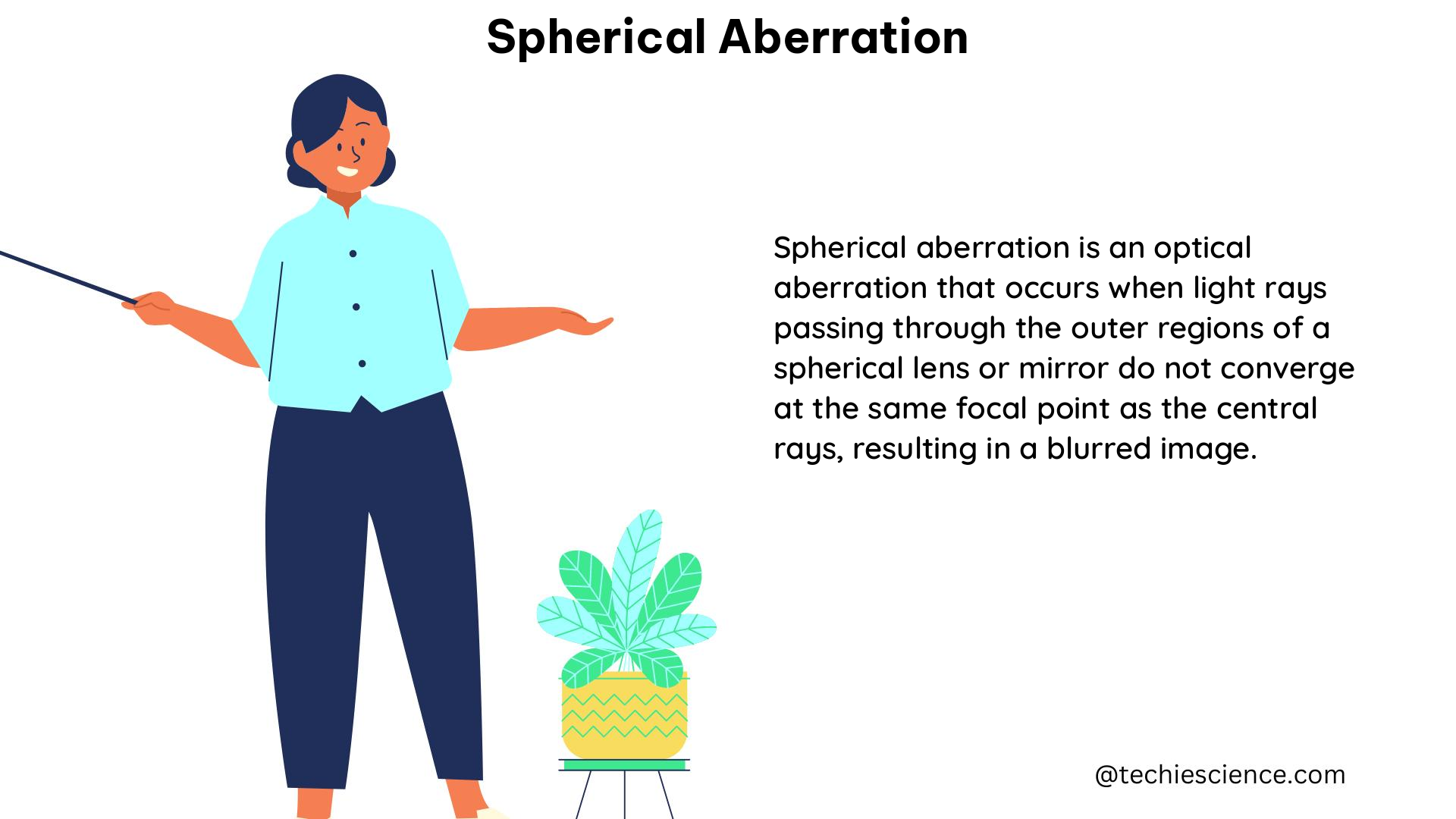Spherical aberration is a common optical aberration that occurs when light rays passing through different parts of a spherical lens or mirror do not converge at a single point, resulting in a blurry image. This aberration can be quantified using Zernike transformations, which convert wavefront aberrations into a set of orthogonal functions, with the Zernike coefficient for spherical aberration being a common metric.
Understanding Spherical Aberration
Spherical aberration is caused by the fact that the refractive index of a spherical lens or mirror is not constant across its surface. This means that light rays passing through the outer regions of the lens or mirror will be bent more than those passing through the center, resulting in a failure to converge at a single point.
The magnitude of spherical aberration can be described by the Zernike coefficient for spherical aberration, which is typically denoted as Z₄⁰. This coefficient represents the amount of spherical aberration present in the optical system, with a higher value indicating more severe aberration.
Zernike Polynomials and Spherical Aberration
Zernike polynomials are a set of orthogonal functions that can be used to represent the wavefront aberrations in an optical system. The Zernike coefficient for spherical aberration, Z₄⁰, is one of the Zernike coefficients that describes the spherical component of the wavefront aberration.
The formula for the Zernike coefficient for spherical aberration is:
Z₄⁰ = (6r⁴ – 6r²+ 1) / 4
where r is the normalized radial coordinate, ranging from 0 at the center of the pupil to 1 at the edge.
Measuring Spherical Aberration
Spherical aberration can be measured using a variety of techniques, depending on the specific application and the required level of accuracy.
One common method is to use a Shack-Hartmann wavefront sensor, which measures the local tilt of the wavefront at different points across the pupil. From this data, the Zernike coefficients, including the coefficient for spherical aberration, can be calculated.
Another technique is to use a Fizeau interferometer, which measures the difference between the wavefront of the test beam and a reference beam. This can be used to directly measure the spherical aberration of an optical system.
Spherical Aberration in Cataract Surgery

In cataract surgery, preoperative measurements of higher-order aberrations, including spherical aberration, can be derived from corneal topographic data. These measurements can be used to manipulate the outcome of cataract surgery by implanting an aspheric intraocular lens (IOL) that neutralizes the patient’s preoperative spherical aberration, thereby improving image quality and contrast sensitivity under mesopic and photopic conditions.
The Human Cornea and Spherical Aberration
The human cornea has a positive spherical aberration of approximately 0.27 μm for a 6.0-mm diameter, which remains relatively constant with aging. This positive spherical aberration can be compensated for by implanting an aspheric IOL, such as the Tecnis Z9000, which possesses a spherical aberration of -0.27 μm.
Aspheric IOLs for Spherical Aberration Correction
There are currently three IOLs approved by the FDA for the correction of spherical aberration: the Tecnis, the Sofport AO, and the Acrysof IQ. Each lens uses a distinct strategy to correct spherical aberration:
- Sofport AO lens: Has no spherical aberration
- Acrysof IQ: Has a negative spherical aberration of 0.20 μm
- Tecnis lens: Aims for the full correction of corneal spherical aberration
By implanting an aspheric IOL that neutralizes the patient’s preoperative spherical aberration, the image quality and contrast sensitivity under mesopic and photopic conditions can be improved compared to standard IOLs.
Spherical Aberration in Other Optical Systems
Spherical aberration is not only a concern in cataract surgery but also in other optical systems, such as telescopes and microscopes.
Spherical Aberration in Telescopes
In telescopes, spherical aberration can be measured using an instrument that permits the rapid determination of longitudinal spherical and longitudinal chromatic aberration of lenses. This instrument measures the maximum separation of points on a given curve measured along the axis of abscissae to judge the excellence of the longitudinal spherical correction.
Spherical Aberration in Microscopes
In microscopes, spherical aberration can be characterized by using diffraction light from nanosphere particles. This method involves measuring the diffraction patterns of nanosphere particles placed on a substrate and analyzing the resulting data to determine the spherical aberration of the microscope objective lens.
Conclusion
Spherical aberration is a complex optical phenomenon that can have significant impacts on the performance of various optical systems, including cataract surgery, telescopes, and microscopes. By understanding the underlying principles of spherical aberration, quantifying it using Zernike transformations, and employing techniques to measure and correct it, researchers and engineers can optimize the performance of these systems and improve the quality of the resulting images and observations.
References:
– Customizing the Correction of Spherical Aberration – CRSToday
https://crstoday.com/articles/2006-nov/crst1106_17-php
– An instrument for measuring longitudinal spherical aberration of lenses – NIST
https://nvlpubs.nist.gov/nistpubs/jres/43/jresv43n2p137_A1b.pdf
– Spherical Aberration of Lenses – NIST
https://nvlpubs.nist.gov/nistpubs/jres/43/jresv43n2p137_A1b.pdf
– Physics Tutorial: Spherical Aberration – Physics Classroom
https://www.physicsclassroom.com/class/refln/Lesson-3/Spherical-Aberration
– Spherical aberration measurement of a microscope objective by use of diffraction light from nanosphere particles – Optica
https://opg.optica.org/ao/viewmedia.cfm?seq=0&uri=ao-56-16-4766

The lambdageeks.com Core SME Team is a group of experienced subject matter experts from diverse scientific and technical fields including Physics, Chemistry, Technology,Electronics & Electrical Engineering, Automotive, Mechanical Engineering. Our team collaborates to create high-quality, well-researched articles on a wide range of science and technology topics for the lambdageeks.com website.
All Our Senior SME are having more than 7 Years of experience in the respective fields . They are either Working Industry Professionals or assocaited With different Universities. Refer Our Authors Page to get to know About our Core SMEs.